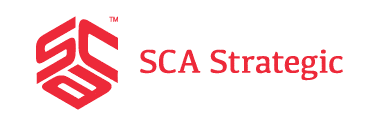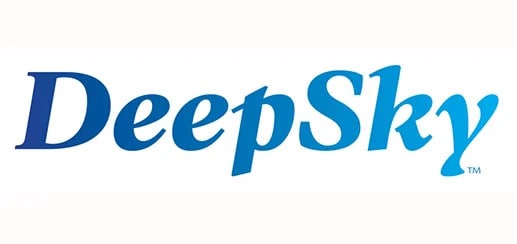Find the best Warehousing & Fulfillment company by filling out the form below, or Click Here to continue reading our page Everything You Need to Know About Fleet Maintenance
Fleet maintenance is more than just a ‘fix it when it breaks’ approach; it’s crucial to ensuring that your warehousing and fulfillment processes are efficient and reliable. Properly maintained vehicles are less likely to break down, ensuring that goods get to where they need to be on time.
Whether you’re a logistic manager overseeing a large fleet or someone simply interested in how to keep everything running smoothly, this comprehensive guide has got you covered. In this guide, we’ll explore different types of fleet vehicles, delve into the key aspects of fleet maintenance, and provide tips and tools to help you manage it all effectively.
Fleet maintenance involves keeping an organization’s vehicles in good working order to ensure they are safe, reliable, and operational. It encompasses a range of tasks, including regular inspections, preventive maintenance, repairs, part replacements, and record-keeping. Through fleet maintenance, organizations aim to maximize the operational availability of their vehicles, thus enabling them to efficiently carry out essential tasks such as transporting goods or people.
The systematic approach to fleet maintenance includes scheduling regular inspections, performing preventive maintenance, ensuring prompt repairs, managing parts inventory, and adhering to safety and regulatory compliance. Besides keeping vehicles in optimal condition, a good fleet maintenance program also aims to comply with legal regulations and avoid unexpected breakdowns, which could adversely impact the organization’s operations and finances. Effective fleet maintenance can also encompass activities such as predictive maintenance, inventory management, and remote diagnostics, which help quickly identify and fix issues as they arise, thereby minimizing downtime and associated costs.
Knowing the types of fleet vehicles is crucial, as each type may have its own maintenance needs and challenges. Whether you’re managing a group of delivery vans, trucks, or specialized vehicles, understanding their unique requirements can help you tailor your maintenance strategy effectively. Let’s dive into the different types of fleet vehicles:
Fleet vehicles are typically owned or leased by organizations like companies, government agencies, or public utilities rather than by individuals or families. They serve as the backbone for many businesses, being used for transporting people, products or providing services like repair and maintenance.
Understanding the basics of fleet maintenance is essential for various reasons. Effective fleet maintenance can help save money by limiting downtimes and reducing unforeseen expenditures. It is essential to keep vehicles in good condition, ensuring they are safe to drive, which helps guard against accidents.
Regular inspections are a fundamental aspect of fleet maintenance. They involve:
Fleet Maintenance Management is a systematic approach aimed at keeping a business or organization’s fleet of vehicles in optimal working condition, ensuring safety, efficiency, and availability for various tasks like transporting goods or people. Here are key aspects of fleet maintenance management:
Implementing the right practices in fleet maintenance can ensure that vehicles remain in good working condition, reducing downtimes and saving costs. Here are some best practices in fleet maintenance gleaned from various sources:
Keeping track of fleet maintenance is essential for ensuring the smooth operation of a fleet and can save companies time and money in the long run. Here’s how to keep track of fleet maintenance:
Understanding Vehicle Needs:
Creating a Checklist:
Regular Scheduling:
Preparing for the Unexpected:
Maintenance Spreadsheets:
Maintenance Logs:
Fleet Maintenance Apps:
Digital Forms and Software:
It’s time to take charge of your fleet maintenance, and Warehousing and Fulfillment is here to make that process as easy as possible. With years of expertise, our team aims to help your company find the most effective and budget-friendly strategies. We stand out from the crowd because we offer FREE, unbiased quotes from qualified vendors without any hidden fees or commissions on your end.
Let us help you find the perfect outsourced vendor for your fleet maintenance needs. Simply fill out our quote request form and let us do the work in finding you the best match for your fleet maintenance needs. Take the first step today and become part of our family!
The objective of fleet maintenance is to keep vehicles on the road while ensuring their safety, performance, and cost-effectiveness through measures such as improving vehicle utilization, lowering fuel consumption, optimizing maintenance and repair programs, and enhancing safety for employees, customers, and other motorists.
Fleet maintenance software is a specialized tool designed to centralize information, automate tasks, and provide critical insights to manage and maintain a fleet of vehicles efficiently and cost-effectively, encompassing activities like logging vehicle maintenance, scheduling preventive maintenance, and providing alerts and reminders.
Maintaining a fleet vehicle involves regular inspections, scheduled servicing based on the manufacturer’s guidelines, prompt repairs, and adherence to a preventive maintenance program to ensure the vehicle’s safety, reliability, and longevity.
Your contact information is held in the strictest of confidence. We will contact you before we connect you with vendors so that we can learn about your situation, obtain any of your contact preferences, and answer any of your questions.
YOU have control over your contact details:
Get Connected with your best matches, and receive
We Care About Your Privacy. Your information is shared with only pre-screened providers. You may opt out of communication at any time. View our Privacy Policy.

I want to say thank you for your help in finding a warehouse so quickly. Your service was amazing. I received replies the same day and have selected a company that will work well for us. I definitely recommend your services.

I wanted to express my gratitude for your services and let you know that it was a very enjoyable experience! We have selected one of the companies and they are awesome!

You are doing such a great job and this service that you provide is a life saver for people especially startups like me....We cannot spend budgets on researching as much as the big firms can...and you provide us one stop solution which will answer all our questions.

I just wanted to let you know that I selected one of your vendors as our fulfillment house. They can do what we need and we’re looking forward to working with them. They can handle our “special projects” fulfillment, which was key to our decision in bringing them onboard. I appreciate this service. It was great for our company.

I didn’t know there was so much difference in fulfillment companies — this was my first time in need of this sort of service. After a Google search I luckily stumbled upon WarehousingAndFulfillment.com. They saved me an incredible amount of time and money. Within minutes I had a couple of emails from good companies that fit my situation. I am very appreciative of their help.

Warehousing and Fulfillment was the perfect matchmaker in finding us a fulfillment partner. They provided several great options, all of whom were very responsive and willing to take the time to talk through our needs. We ended up going with W&F’s top match and we couldn’t be happier. I highly recommend W&F, particularly to anyone whose business relies on a strong fulfillment partner.

We were having multiple issues with our 3PL fulfilling warranty replacement parts. Our company needed to make a change and make one fast. I reached out to WarehousingAndFulfillment.com to facilitate my search for a reputable, service oriented 3PL that can handle the demands of a highly seasonal business to pick, pack and ship parts quickly. I received several qualified 3PL leads that matched what we were looking for. After reviewing and speaking with many one stood out from the rest, and we found a great partner. We could not recommend WarehousingAndFulfillment.com enough.

We found the perfect third-party fulfillment vendor through insightQuote. We never would have found them on our own. We can’t thank you enough and our customers thank you too.

Thanks for all of your help. This was a huge undertaking for us and your guidance was extremely helpful!

Thank you so much for your excellent service. We have chosen one to go forward with. This has saved us a great deal of time.

They really listened to our requirements and then matched us with great vendors that could meet our specific challenges.

I just wanted to say thank you so much for setting me up with these vendors. I have found pricing better than I ever expected to find.

Legit, this was such a good experience ... I was shocked how fast the vendors contacted me and got the ball rolling. This was such a pleasant experience

What an awesome service. A problem I fought with daily for over 3 weeks, solved in less than 24 hours.

 View More
View More
Get fulfillment tips delivered to your inbox!